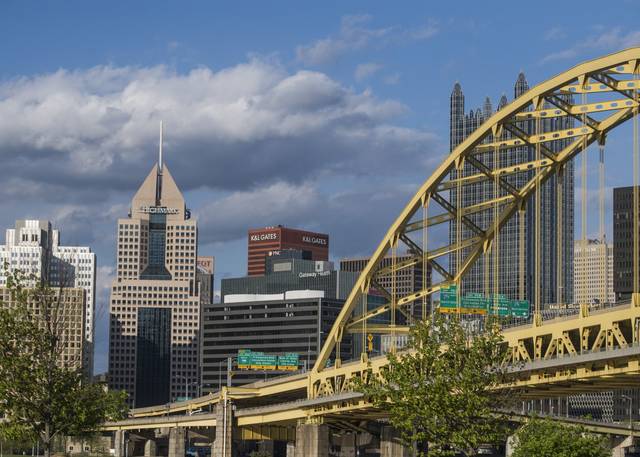Municipalities across Pittsburgh region face bleak budget forecasts in wake of coronavirus
Buffeted by stay-at-home orders and growing unemployment, Pennsylvania municipalities are facing a revenue hole that could result in fewer police and firefighters, more potholes and crumbling highways, as well as shuttered parks and pools.
As many as 249 municipalities across the state, including 112 in the 10-county southwestern region, will not be able to pay their bills in another 18 months, a pair of studies conducted by the University of Pittsburgh’s Municipal Finance Research Collaborative suggest.
Locally, researchers calculated municipalities in Allegheny County will likely see a loss of revenue anywhere from $73.8 million to $279 million, while Westmoreland County municipalities likely will see declines from $9.8 million to $40.1 million. Losses for municipalities in the entire region could range from $117.9 million to $479.3 million.
And they are not alone.
A study by the Upjohn Institute for Employment Research found state and local governments will be forced to reconcile budget shortfalls of up to $1 trillion by the end of 2021.
Pennsylvania has 2,495 municipalities, many of which have 2,000 or fewer residents. The Pitt studies did not identify specific municipalities facing potential financial ruin.
“There is no question in my mind that there will be fewer police and firefighters in the commonwealth and recreational opportunities at public pools and parks for underserved youth if no aid comes in,” said Rick Schuettler, executive director of the Pennsylvania Municipal League.
Revenue losses are expected to run the gamut from financially strapped communities that have struggled with shrinking tax bases for years to those that have seen modest growth and everything in between.
Already, communities like Greensburg and Dormont have opted against opening public pools this year.
Pittsburgh officials are looking for a line of credit to make up for what officials say will be the city’s first budget deficit in a decade.
And Hempfield, which has long held the line on local taxes, recently found itself about $400,000 short of revenue from the same period last year.
Although experts say municipal revenue shortfalls are a given, just how great the shortfall will be varies dramatically.
Schuettler said a National League of Cities study projected Pennsylvania local governments will see a 40% decline in revenue due to covid-19. The Pitt study, on the other hand, projected potential losses will range from a low estimate of 4% to a high loss scenario of more than 16%, with losses at the medium level totaling about 10%.
The Pitt study estimated Pennsylvania municipalities will lose anywhere from $833 million to $3.4 billion in tax revenue this year alone. Those municipalities tap tax and fee revenues to underwrite everything from road maintenance and snow removal to police and fire protection, garbage collection and pension obligations for public employees.
Researchers focused on municipalities that failed to post a revenue surplus of at least 10% to 25% at least twice in a four-year period. They face a high risk of insolvency as a result of the coronavirus pandemic, said George Dougherty Jr., who teaches public policy at Pitt and heads the Municipal Finance Research Collaborative at Pitt’s Center for Metropolitan Studies.
The impact of shrinking tax and fee collections already is wreaking havoc at the state level. The Pennsylvania Department of Revenue reported tax collections were down 17% in May and state revenues are down $2.6 billion so far for the year.
That means the safety net that helped boost struggling municipalities when heavy industry imploded in Western Pennsylvania in the early 1980s is itself fraying, said Brian Jensen, executive director of the Pennsylvania Economy League.
“The state’s going to be $4 billion to $5 billion in the hole. I worry that if the federal government doesn’t get some more funding to the states and the counties, the municipalities are going to have real problems,” Jensen said. “It becomes a question of where do you cut? What is the breaking point?”
The Pitt study projected that even with federal aid and cutbacks in services, municipalities will need to increase taxes dramatically to fill budget holes.
Schuettler said his members are hoping to get direct aid through the next federal stimulus bill. In the meantime, he said state lawmakers could help by providing flexibility that would allow municipalities to stretch out pension obligations, reopen collective bargaining agreements, alter the provisions of a new mandate requiring municipalities to provide paid leave for public safety workers and allow adjustments to unemployment compensation programs.
Deb Erdley is a Tribune-Review staff writer. You can contact Deb at derdley@triblive.com.
Remove the ads from your TribLIVE reading experience but still support the journalists who create the content with TribLIVE Ad-Free.

